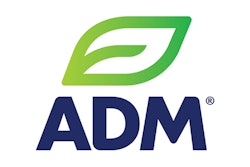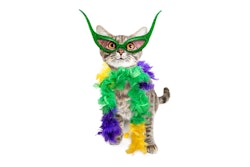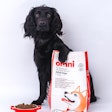
In the May 2019 issue of Petfood Industry magazine, we highlighted the world’s top pet food companies. Among those companies were three with significant growth in 2018 due to acquisitions — United Petfood Producers, ADM Pet Nutrition and J.M. Smucker — and neither the consolidation nor the boost in growth are surprising. Pet food is a mature market in several parts of the world, and while there’s still a lot to be said for consumer growth in the more developing regional markets, companies making their money particularly in North America and western Europe are looking for additional ways to continue gaining market share. M&A activity is one of the ways being taken significant advantage of (Petfood Industry reported on 51 different pet food-related mergers and acquisitions in 2018).
The strategy of M&A
Mergers and acquisitions provide growth on two fronts. First, they allow companies the opportunity to enter new segments of their market they weren’t in before, which may increase their overall market strength. For example, private label superpremium pet food manufacturer C.J. Foods purchased ingredient supplier Lortscher Animal Nutrition in early 2018.
“The purchase of Lortscher Animal Nutrition increases C.J. Foods Holdings' investment share in the superpremium pet food manufacturing space at a time when our team and board are very bullish about the future of this market segment,” said Tod Morgan, C.J. Foods CEO at the time.
Second, companies can invest in and enter a new market for the first time, expanding overall market growth, such as when international private-equity firm Civen acquired European pet food manufacturer Partner in Pet Food (PPF) in April 2018.
“The European pet food market is one of the most attractive spaces in the wider consumer sector,” said Matteo Corà, senior principal at Cinven, at the time. “PPF is a highly successful business with further opportunities for growth organically, leveraging its production capabilities and track record for product innovation, and through acquisition.”
2019 M&A activity so far
There have already been several mergers and acquisitions in 2019, and some of the notable events include diversification, international expansion and portfolio expansion as their motivators.
In June, Manna Pro Products, a manufacturer and marketer of pet care and nutrition, announced that it would acquire pet food, treat and services company Hero Pet Brands, expanding its presence in multiple areas of the pet industry.
“Hero Pet Brands has a leading product portfolio that perfectly complements our current offering and enables us to grow in scale in the thriving companion pet care and wellness category,” said John Howe, CEO of Manna Pro. “Our companies share a relentless focus on enriching the lives of pets and their families and we welcome their deep pet care expertise, brand building excellence and talented employee base.”
In May, Czech pet food producer Vafo Praha acquired Finnish raw and frozen pet food company Kennelpakaste Oy in order to expand its international reach.
“The Finnish plant produces dry animal parts and BARF (bio-appropriate raw food),” said Petr Kříž, a member of the board of directors and head of mergers and acquisitions at Vafo. “Investments into a substantial extension of its drying capacities are already on the way. This will multiply its current capacities. We mainly plan to serve Scandinavia from this factory, but our idea is that certain wild local Finnish specialties, such as reindeer meat, will be exported throughout the European Union. BARF, on the other hand, will stay regional.”
In April, Nestlé Purina PetCare continued a trend of large pet food players entering the veterinary space by announcing that it would acquire a minority shareholding and enter a partnership with Independent Vetcare Group International (IVC Group). IVC Group is a European veterinary services group with a network of more than 1,100 vet clinics and hospitals across ten countries.
Through the partnership, Nestlé Purina said it hopes to “strengthen its collaboration with scientists, veterinarians and pet care professionals to help deliver advanced pet food solutions and first-class pet care services.” According to the company, deeper knowledge of pets' and pet owners' needs will enhance its ability to develop innovative products and solutions tailored to meet the specific needs of cats and dogs.
In February, Symrise signed a purchase agreement with the owners of American Dehydrated Foods (ADF)/International Dehydrated Foods (IDF), a natural nutrition ingredient provider for pet food.
“The strategic acquisition of ADF/IDF perfectly delivers on our strategy to expand in fast-growing, high-margin business areas,” said Dr. Heinz-Jürgen Bertram, CEO of Symrise AG. “The complementary offering will further diversify our Diana portfolio in pet food and nutrition. The acquisition of the leading provider of natural pet food nutrition ingredients is a further breakthrough for Symrise into the pet food nutrition market. With our expertise in pet food palatability and competence in nutrition solutions, we will create an integrated partner for our pet food clients. Through this acquisition, we will also broaden our global presence, especially in the USA — a strategically important growth market for us — and strengthen our customer base.”
The continued prospects of M&A in pet food
When dealing with the inviting prospect of a mature market that also maintains its status as a growth market, it’s expected that mergers and acquisitions will continue apace in the pet food industry. Whether it’s larger companies scooping up specialty manufacturers, established manufacturers looking to gain ground along the supply chain with supplier acquisitions, or just the desire to gain share in other, non-food aspects of the pet market, the myriad ways in which the market landscape can shift are plentiful — and as we continue through the second half of 2019, we’ll likely see examples of all those permutations and more.



















